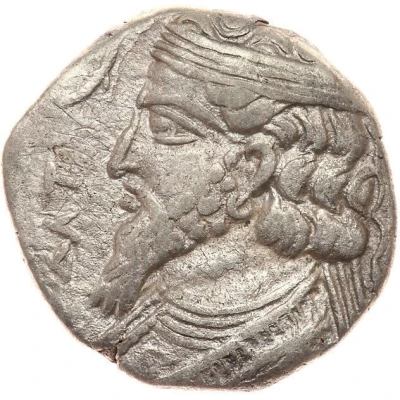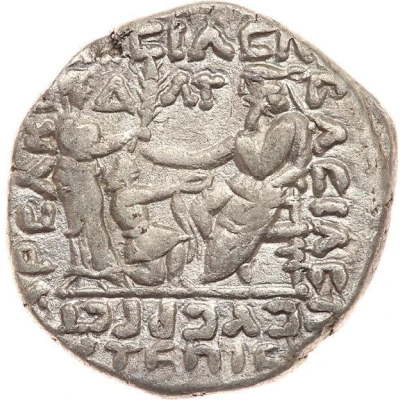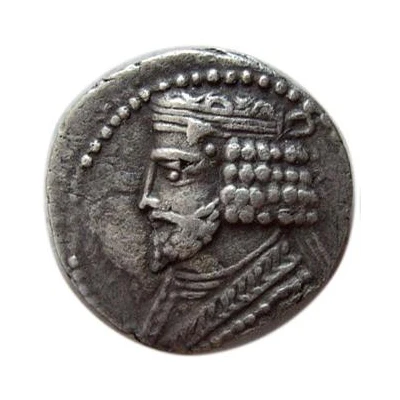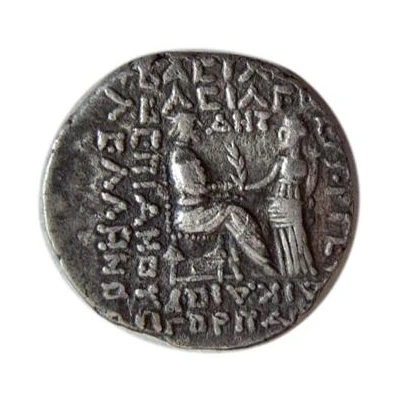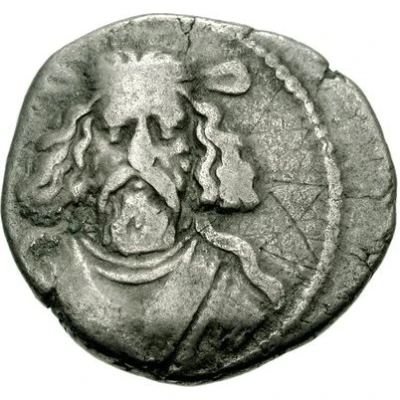
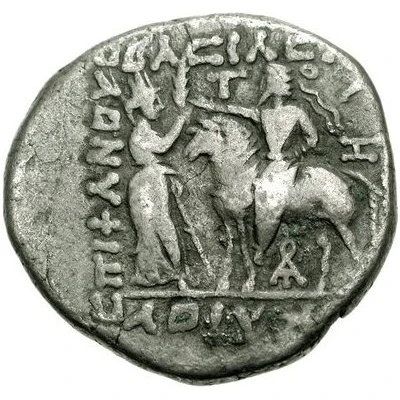

© http://www.coinproject.com/siteimages/97-83000713.jpg
Tetradrachm - Artabanus II Type # 63 - Seleucia
338 (26) year| Billon | 13.5 g | 25 mm |
| Issuer | Parthian Empire (Parthian Empire (247 BC - 224 AD)) |
|---|---|
| King | Artabanus II (12-40) |
| Type | Standard circulation coin |
| Year | 338 (26) |
| Calendar | Seleucid era |
| Value | Tetradrachm (4) |
| Currency | Drachm (247 BC-224 AD) |
| Composition | Billon |
| Weight | 13.5 g |
| Diameter | 25 mm |
| Shape | Round (irregular) |
| Technique | Hammered |
| Orientation | Medal alignment ↑↑ |
| Demonetized | Yes |
| Updated | 2024-10-10 |
| Numista | N#146069 |
|---|---|
| Rarity index | 97% |
Reverse
Male wearing diadem left on horseback, arm extended; Greek letters ΤΛΗ divided by his head; in front, Tyche standing right presenting palm branch; below horse, monogram [~] (Artemisios?); four-line Greek inscription (L63i); no border.
Script: Greek
Lettering: ΒΑΣΙΛΣΩΣ ΑΡΣΑΚΟΥ ΔΙΚΑΙΟΣ ΣΠΙΦΑΝΟΥΣ
Translation: BASE OF ARSAKOU RIGHT SURFACE
Comment
MACW 617 var. (Artabanos II; month)
The monogram under the horse is different in this variety minted Panemos 338 SE (June, AD 27).
Interesting fact
One interesting fact about this coin is that it features a unique blend of Greek and Persian influences in its design. The Parthian Empire, which was a major power in the ancient Near East, was known for its cultural diversity, and this coin reflects that diversity in its blend of Greek and Persian styles. The coin's design includes a portrait of Artabanus II, the Parthian king, wearing a crown that combines elements of both Greek and Persian royal headgear. Additionally, the coin's inscriptions are written in both Greek and Aramaic, further highlighting the cultural exchange that characterized the Parthian Empire. This coin is a fascinating example of the rich cultural heritage of the ancient Near East.

